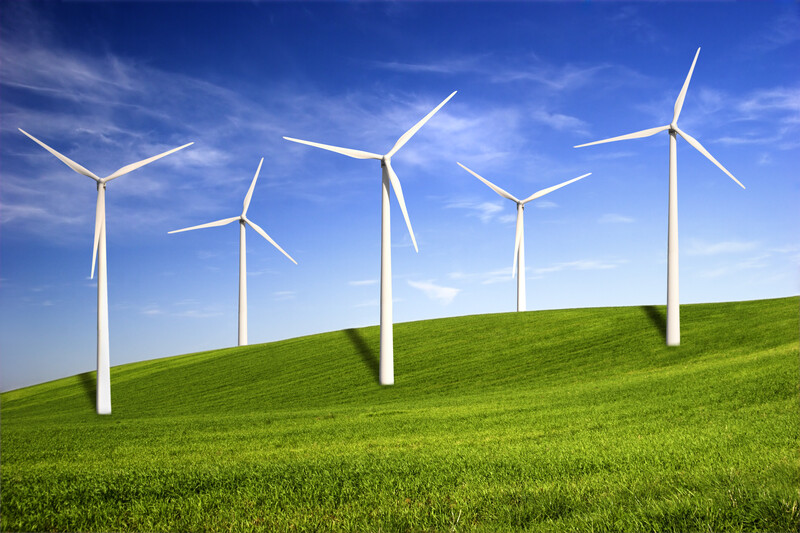U.S. Department of Energy (DOE) 2018 report on Wind Power electricity generation shows a booming industry year. The report addresses costs and performance for three installation sectors including land based, offshore and distributed wind. Distributed wind is categorized as small and localized wind powered systems providing electricity to homes, farms, businesses, public facilities and the like. This electrical generation resource offsets all or a portion of on-site or local energy consumption otherwise provided by utility operations .
Land based wind energy installations continue to appear across the country and are predicted to surpass other sources of renewable power generation by 2019. Plans for an additional 25-gigawatts of electrical capacity added to the power grid via development of U.S. offshore wind farm operations are in progress.
Commercial land based wind turbine installations saw solid growth in 2018 adding 7,588 megawatts of power capacity. As a country over 83,000 wind turbines are installed, which delivered 1,127 MW of electricity.
Wind Power Market Growth
As reported in Lawrence Berkeley National Laboratory 2018 Wind Technologies Market Report the U.S. wind energy market is growing stronger each year. Citied facts in the report include:
- The industry supports over 144,000 jobs. An all-time high.
- Forty-one states have utility scale wind operations. Texas leads the way followed by California, Iowa, Kansas and Oklahoma.
- Wind energy provides 6.5% of the nation’s electricity with larger operating units trending.
Long term contracts for wind energy were sold at all-time low prices. The 2018 price averaged below 2 cents per kilowatt hour. Factors contributing to lower costs include less expensive turbine prices and operating cost, low interest rates and production tax credits.
Wind Power Distribution
In a separate 2018 report prepared by Pacific Northwest National Laboratory the below facts were presented.
- Distributed wind power is generally consumed near its point of generation. In contrast, wholesale generation power is distributed via transmission lines and substations.
- Since 2003 the average capacity of large-scale turbines has almost doubled.
- In 2018, a 29% increase occurred in total project capacity for commercial and industrial distributed wind projects. Not to be out done, Distributed wind generation saw a 47% growth. Frequently smaller distributed systems are used to charge batteries and sometimes augment solar PV systems.
Offshore Wind Power Installations
Wind generated electricity from sea-based installations is addressed in the 2018 Offshore Wind Technologies report. The report states potential generation capacity across 13 states is 25,824MW. Most projects are east coast installations with one in the Great Lakes. California and Hawaii are developing floating offshore wind projects.
Future Trends and Complimenting Technologies
Ongoing development in larger power producing equipment along with increasing demand for cheap electricity will advance the growth in wind power generation. Augmenting growth in the renewable energy market is solar and hydroelectric power. In combination, these renewable energy technologies play an increasingly important role in non-atmospheric polluting power generation.


Recent Comments